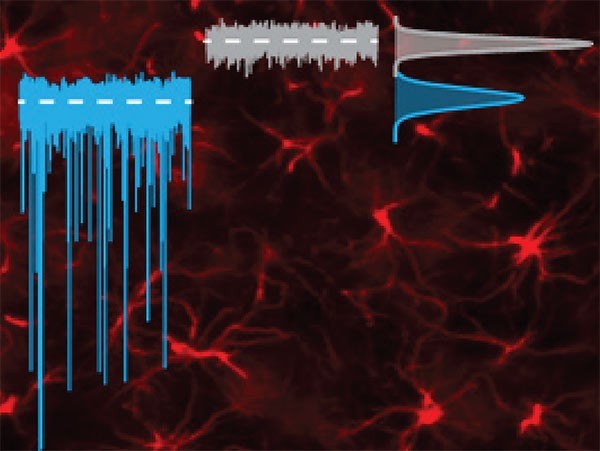
Marine Chazalon, Jérôme Baufreton et al. dans Cell Report
GAT-3 Dysfunction Generates Tonic Inhibition in External Globus Pallidus Neurons in Parkinsonian Rodents. Chazalon M, Paredes-Rodriguez E, Morin S, Martinez A, Cristóvão-Ferreira S, Vaz S, Sebastiao A, Panatier A, Boué-Grabot E, Miguelez C, Baufreton J. Cell Rep. 2018 May 8;23(6):1678-1690. doi: 10.1016/j.celrep.2018.04.014.
Marine Chazalon (left) did her Ph. D in the team « Dopamine & Neuronal Assemblies » under the direction of Jérôme Baufreton (right). CNRS UMR5293, Institut des Maladies Neuro dégénératives. Cristina Miguelez (center) is an Assistant Professor in the Pharmacology Department of the University of the Basque Country in Leioa, Spain
Commentaire
The globus pallidus (GP) belongs to the basal ganglia, a subcortical network involved in the control of voluntary movements. Parkinson’s disease (PD), the second most prevalent neurodegenerative disorders after Alzheimer’s disease is caused by the progressive loss of dopamine-synthesizing neurons of the substantia nigra pars compacta. In PD, GP neurons become hypoactive but the underlying cellular mechanisms are poorly understood. In this study, we demonstrated that GABA transporters GAT-3 are downregulated in GP astrocytes, which leads to GABA uptake deficiency and excessive activation of extrasynaptic GABAA receptors in GP neurons in experimental rodent models of PD. We show that GAT-3 activity is regulated by astrocytic D2 dopamine receptors in control animal suggesting that the loss of dopamine in PD in the GP is directly related with GAT-3 dysfunction. Finally, we provided evidences that the impairment of pallidal GAT-3 activity is responsible for motor coordination deficits suggesting that alteration of GABA neurotransmission in the GP contributes, in part, to the appearance of motor symptoms in PD
Abstract
The external globus pallidus (GP) is a key GABAergic hub in the basal ganglia (BG) circuitry, a neuronal network involved in motor control. In Parkinson’s disease (PD), the rate and pattern of activity of GP neurons are profoundly altered and contribute to the motor symptoms of the disease. In rodent models of PD, the striato-pallidal pathway is hyperactive, and extracellular GABA concentrations are abnormally elevated in the GP, supporting the hypothesis of an alteration of neuronal and/or glial clearance of GABA. Here, we discovered the existence of persistent GABAergic tonic inhibition in GP neurons of dopamine-depleted (DD) rodent models. We showed that glial GAT-3 transporters are downregulated while neuronal GAT-1 function remains normal in DD rodents. Finally, we showed that blocking GAT-3 activity in vivo alters the motor coordination of control rodents, suggesting that GABAergic tonic inhibition in the GP contributes to the pathophysiology of PD.
Equipe :
Dopamine & Neuronal Assemblies
Mise à jour: 27/06/18
